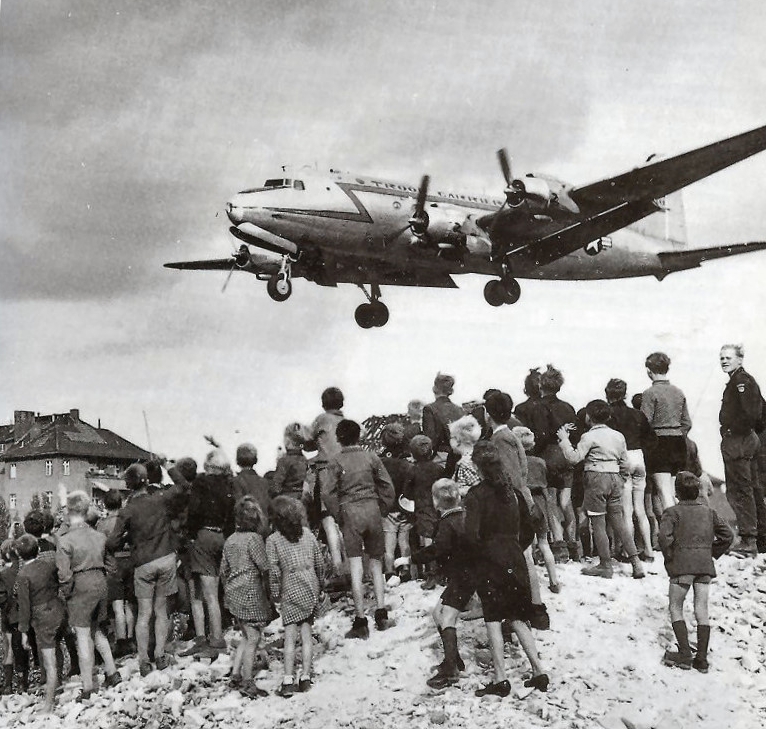
Photo: wiki
The Berlin Airlift was one of the biggest logistical nightmares of the Cold War. Lasting over a year, it consisted of more than 250,000 flights landing at the Tempelhof Airport in Berlin to bring over 2 million tons of supplies to the struggling citizens of East Berlin.
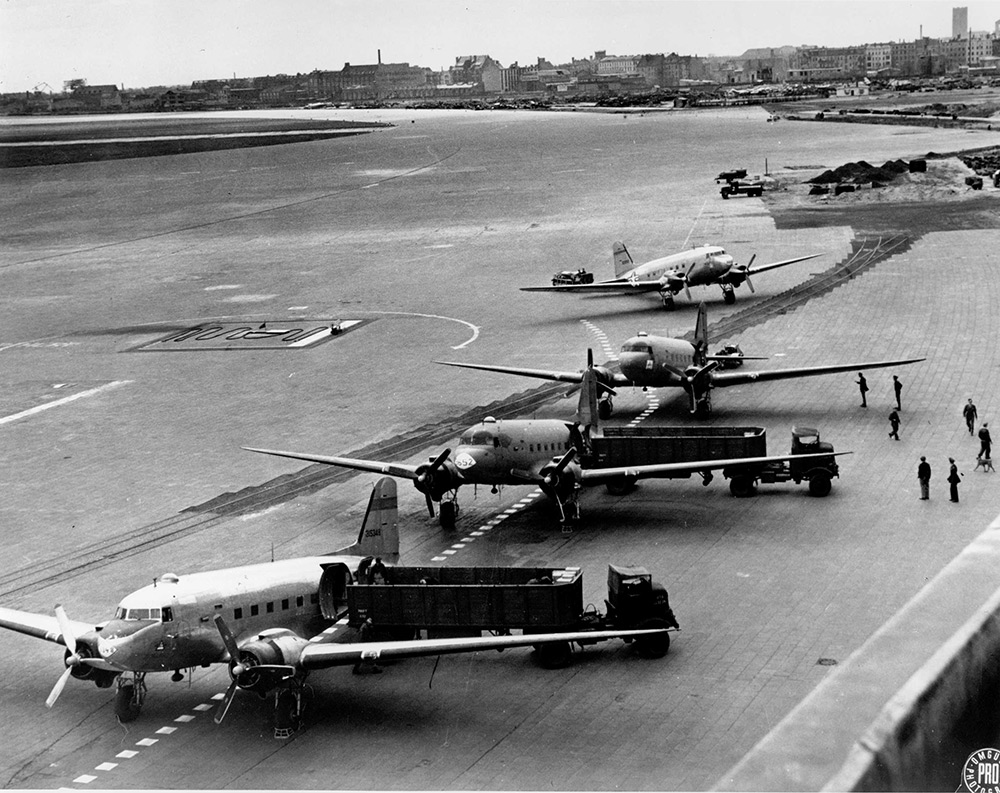
Photo: newseum
It all started at the end of World War II when Germany’s territories were split up amongst the United States, Great Britain, France, and the Soviet Union. The capital city of Berlin was located deep within the territory allotted to the Soviet Union, but the city itself was actually separated into four sections, one for each country. At first, things were going well, but soon the relationship between the United States and the Soviet Union rapidly deteriorated.
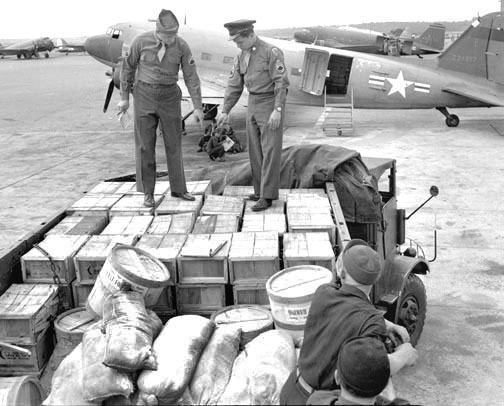
Photo: prezi
By 1948 things had taken a terrible turn for the worse. The Soviets decided they wanted to try and push the British, French and Americans out of Berlin by essentially trying to starve out the people living in West Berlin. In June of 1948, the Soviets began what would eventually be called the Berlin Blockade, where they shut down all traffic heading into the area. The famous Autobahn was shut down, all rail and barge traffic was blocked off making it almost impossible for the Allies to provide the citizens occupying the area with provisions like food and fuel.
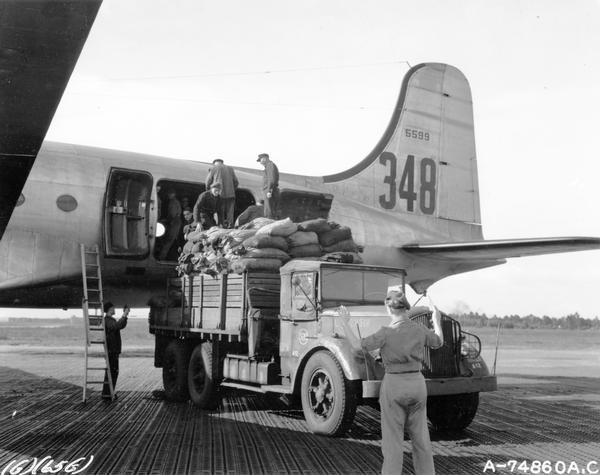
Unloading coal onto the back of a truck
Photo: wisconsinhistory
There were said to be more than a million people in West Berlin at the time so this was a major issue that had to be dealt with very delicately. Some of the Allied government and military officials wanted to respond with force, which surely would have resulted in a massive war between two superpowers that could have escalated into a nuclear situation very quickly.
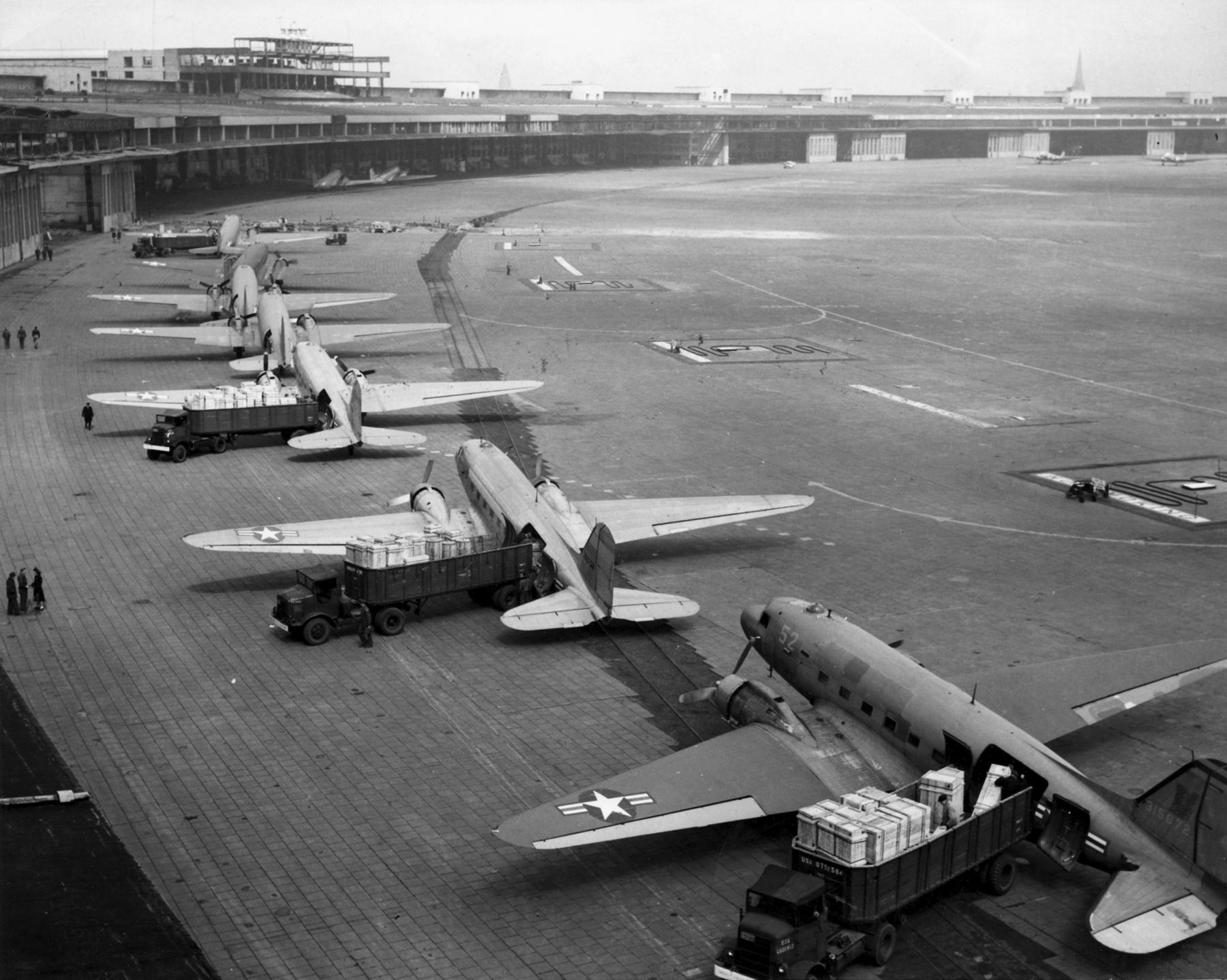
Planes being unloaded at the Tempelhof airport in Berlin
Photo: wiki
Luckily, though, cooler heads prevailed and instead they focused all their energy into what we know today as the Berlin Airlift. They determined the only way they would be able to provide provisions for that many people was to fly it in. Hundreds of cargo planes provided by the Air Force from the United States, Great Britain, Australian, Canada, and New Zealand flew more than 250,000 flights over the course of 15 months.
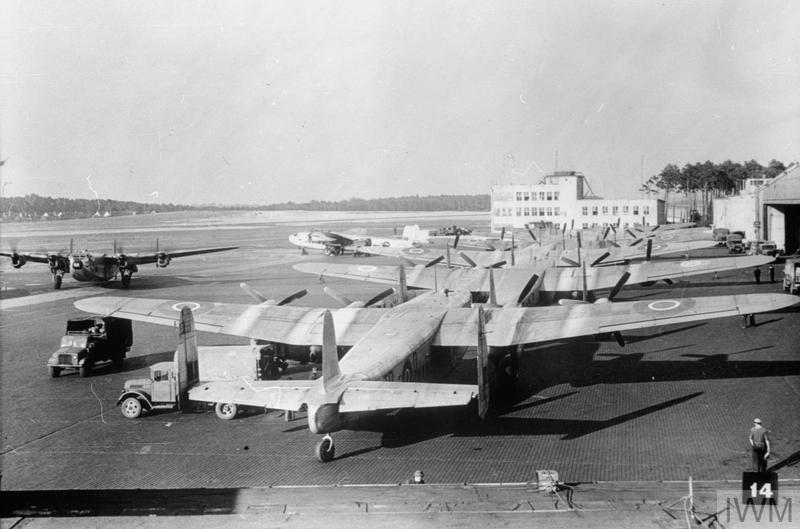
Photo: iwm
The logistics of something like this must have been absolutely horrendous. Especially when there are people on the ground that would starve otherwise. It was reported that almost 9,000 tons of supplies were delivered each day with a total well over 2 million tons delivered by the time the blockade was lifted. According to reports, there was a cargo plane landing every 30 seconds.

Photo: viewliner
This massive undertaking ended up being a brilliant decision because the Soviets didn’t want to interfere with the airlift out of fear that it would create open conflict between the nations. Finally, in May of 1949, the blockade was lifted so road and rail traffic could continue. But the airlift would continue until September 30th just to help the city replenish their stockpiles of medicine, fuel, and food that had been almost nonexistent for the last year.
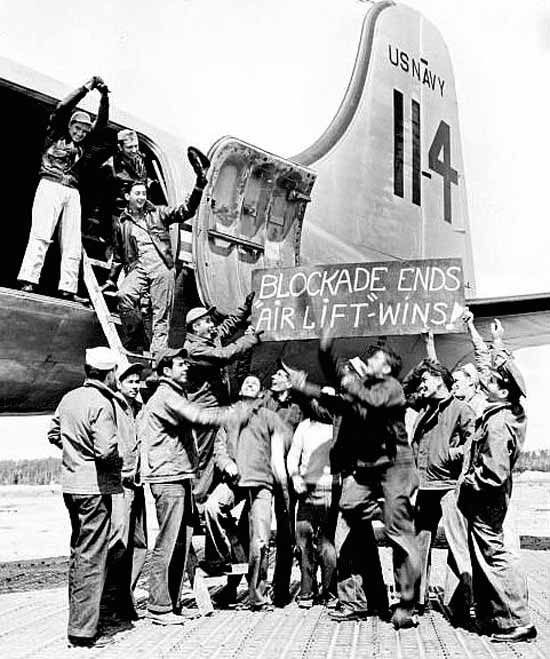
Photo: mason
In the end, a major conflict was avoided and the Unites States, as well as the rest of the allied forces, came out looking like heroes for thinking outside the box and avoiding what could have been a very bad situation not only for the citizens of Germany but the world as a whole. The Soviets, however, ended up looking like a bunch of bullies trying to starve out innocent civilians.

